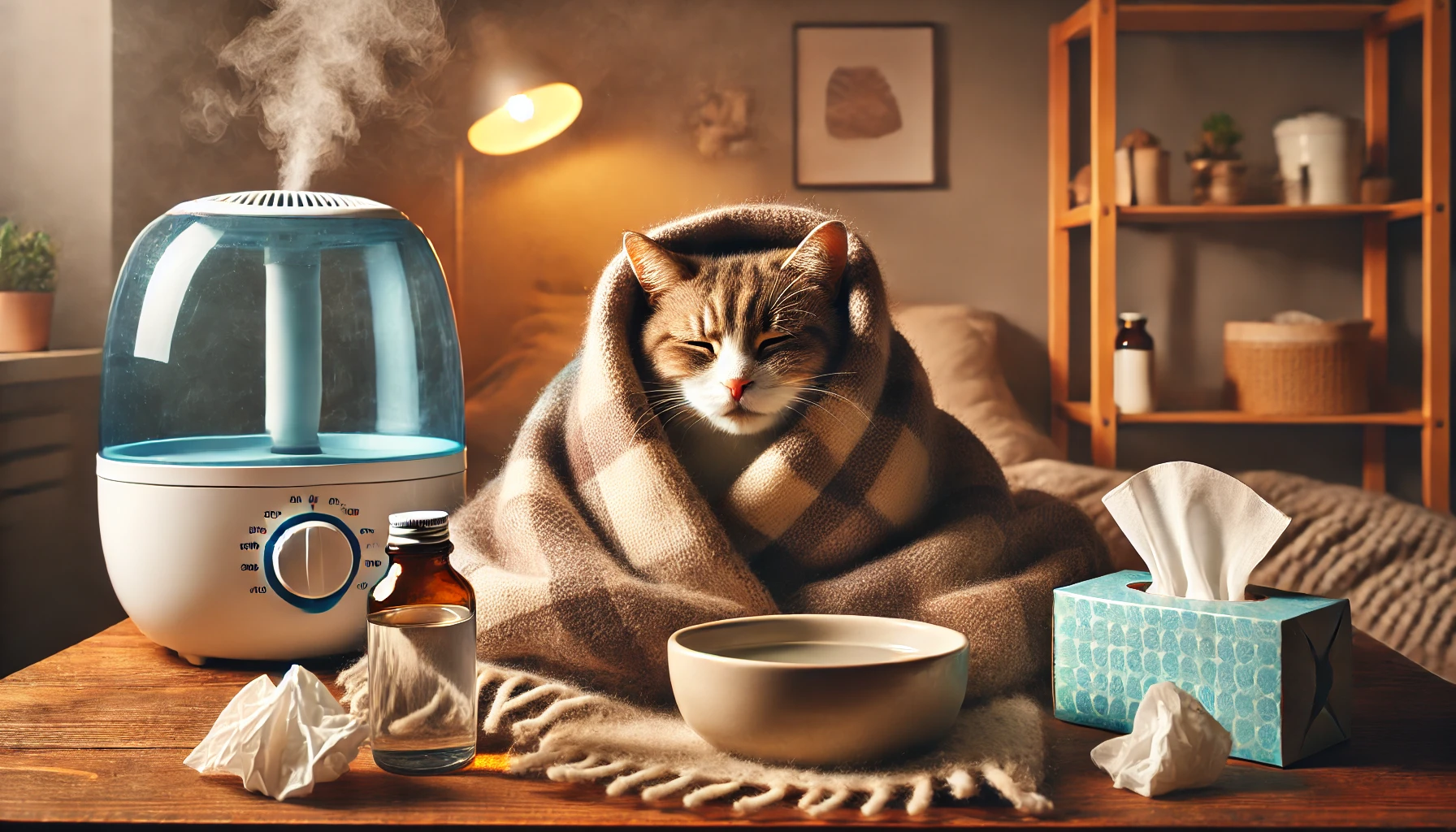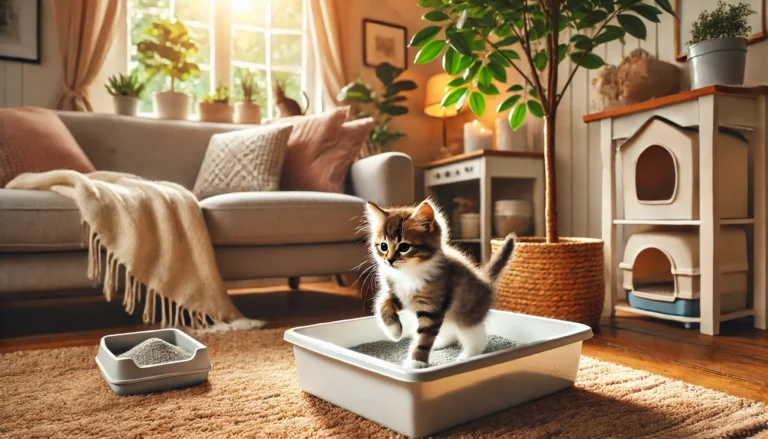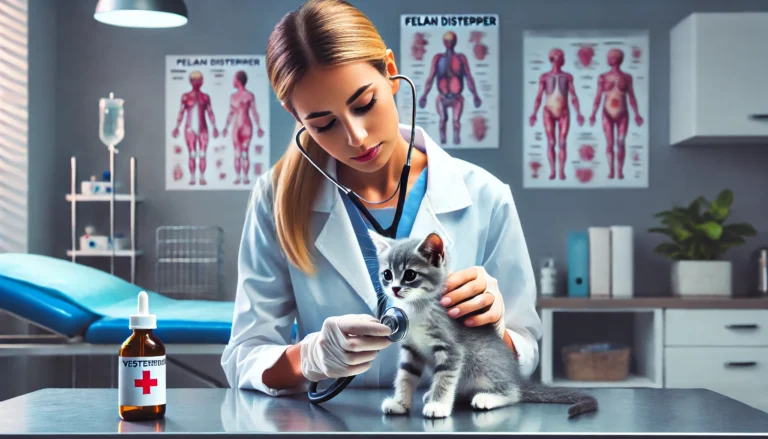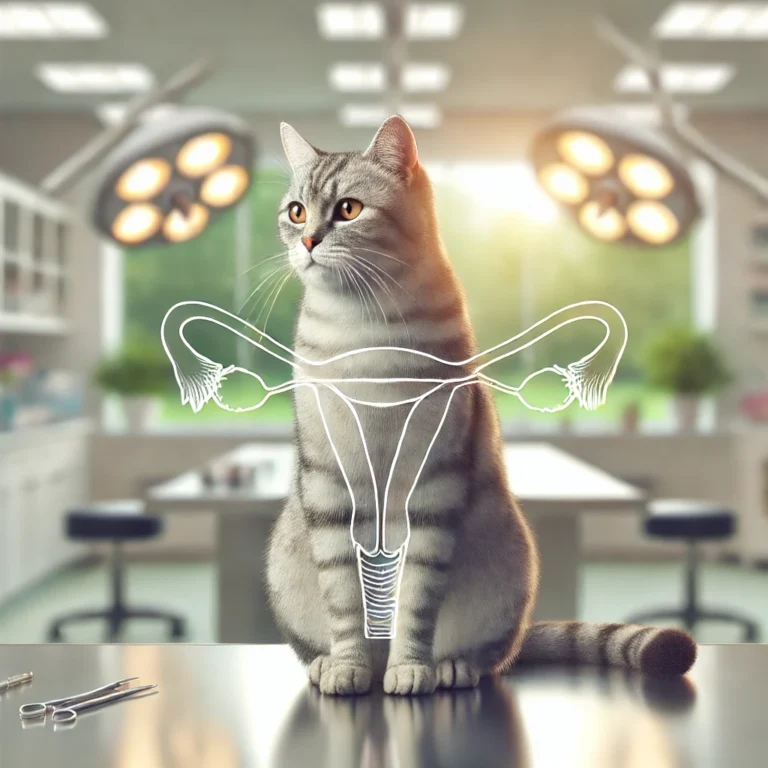10 Effective Ways to Treat a Cat Cold: Clear Symptoms & Fast Relief

It’s always worrying when your furry friend starts sneezing and looking unwell. If your cat has a cold, it’s important to recognize the symptoms early and act quickly. Like humans, cats can get colds and experience discomfort from sneezing, coughing, and a runny nose. Whether it’s a kitten or an older cat, identifying the problem and offering the right care makes all the difference.
In this article, we’ll discuss how to tell if your cat has a cold, what causes it, and the best ways to treat it at home. We’ll also explain when you need to visit the vet and the most effective cat cold treatment options. By the end, you’ll know exactly how to handle a cat cold and ensure your pet recovers fast.
1. What Is a Cat Cold?
A cat cold is a mild upper respiratory infection (URI) in cats, similar to a common cold in humans. It is usually caused by viruses, such as feline herpesvirus or calicivirus, and sometimes by bacteria. Just like humans, cats can catch colds from exposure to other sick animals or contaminated environments. These infections are contagious, especially in multi-cat households or shelters, where viruses spread easily.
Cats of all ages can get colds, but kittens and older cats are more vulnerable due to weaker immune systems. If left untreated, a cold can lead to complications like pneumonia or eye infections, making it essential to act early when symptoms appear.
Can Cats Get Colds?
Yes, cats can get colds, and the condition is fairly common, especially in outdoor or rescued cats. In many cases, direct contact with an infected cat spreads the illness. Indoor cats are less likely to catch colds, but they are not immune.
Key Point
A cat cold is a common upper respiratory infection, treatable with home remedies like warmth, hydration, and steam therapy, but serious cases require vet care.
2. Cat Cold Symptoms: How to Know If Your Cat Has a Cold
Recognizing the symptoms of a cat cold early can help prevent it from worsening. Cats tend to hide signs of illness, so it’s essential to pay attention to any unusual behavior or changes in their health. Here are the most common cold symptoms in cats:
- Frequent Sneezing
If your cat keeps sneezing more than usual, it could be a sign of a cold. Occasional sneezes are normal, but a cat sneezing a lot may indicate an infection. - Runny Nose and Watery Eyes
A cat with a cold may have a congested nose, along with clear or cloudy discharge. Watery eyes are also common, especially in the early stages of infection. - Coughing or Difficulty Breathing
Cats with severe colds may develop a cough or show signs of labored breathing. If the cold worsens, your cat may breathe through its mouth or wheeze. - Loss of Appetite and Fatigue
Sick cats often eat less than usual and may seem lethargic. A cat that is being sick (vomiting) or showing no interest in food needs immediate attention. - Fever or Warm Ears
Cats may develop a low-grade fever when fighting a cold. If your cat feels warm or is showing signs of fever, it might indicate the cold is more serious.
Why Is My Cat Sneezing So Much?
If you’re asking, “Why does my cat keep sneezing?” the cause might be an upper respiratory infection. However, sneezing can also result from allergies or irritants. If your cat sneezes all the time, it’s essential to check for other cold symptoms to rule out more severe conditions.
These symptoms can vary in severity, so knowing how to tell if your cat has a cold helps you act quickly. In the next section, we’ll explore the common causes of cat colds to help you understand why your cat may have fallen ill.

3. Causes of Cat Colds
Understanding the causes of a cat cold can help you prevent future infections. Most cat colds are caused by viruses and spread easily in environments where cats interact, such as shelters, outdoor spaces, or multi-cat homes. Below are the most common causes:
1. Viral Infections: The Primary Cause of Cat Colds
- Feline Herpesvirus (FHV): This is one of the leading causes of cat colds. Once infected, cats become lifelong carriers, with cold symptoms reoccurring during stressful times.
- Feline Calicivirus (FCV): Another common virus, causing cold-like symptoms along with mouth ulcers in some cases.
2. Bacterial Infections
- In some cases, bacteria like Chlamydia felis or Bordetella bronchiseptica cause or worsen a cold. These bacteria can lead to more severe symptoms, like eye infections or coughing.
3. Exposure to Sick Cats
Cats can easily catch a cold from contact with an infected cat. Shared bowls, litter boxes, or grooming tools can also spread the infection. If you’re wondering, “Do cats catch colds?” the answer is yes—especially in crowded environments.
4. Weak Immune Systems in Kittens and Older Cats
Kittens and senior cats are more likely to develop colds due to weaker immune systems. Cold symptoms in kittens can worsen rapidly if not treated.
5. Stress and Environmental Changes
Stress can weaken a cat’s immune response, making it easier for viruses to take hold. Moving to a new home, introducing a new pet, or visits to the vet can trigger a cat cold.
Did You Know?
Worms in cats are internal parasites that can include roundworms, tapeworms, hookworms, heartworms, and, less commonly, whipworms. These parasites live in the digestive system and sometimes the heart or lungs, causing various health issues depending on the type.
4. How to Treat a Cat Cold at Home
If your cat has a cold, taking quick action with home remedies can help relieve symptoms and speed up recovery. While mild colds can often be treated at home, it’s essential to monitor your cat closely for any signs of worsening. Here are some effective ways to treat a cat cold at home:
1. Provide a Warm, Comfortable Environment
- Keep your cat in a warm room away from drafts.
- Use soft blankets to create a cozy space for rest and recovery.
- A stress-free environment is essential, especially if your cat is sneezing a lot.
2. Ensure Proper Hydration
- Encourage your cat to drink water frequently.
- If your cat keeps sneezing or has a stuffy nose, moist food can help with hydration.
3. Steam Therapy
- Steam can help relieve nasal congestion.
- Run a hot shower and place your cat in the bathroom (not directly in the water). The steam will ease breathing if your cat is congested or struggling with a stuffy nose.
4. Gently Wipe Nose and Eyes
- Use a soft cloth to wipe away any discharge from the nose or eyes.
- Keeping your cat’s face clean helps prevent further infections.
5. Offer Nutrient-Rich Food
- Sick cats often lose their appetite, so offer flavorful wet food or treats to tempt them.
- If your cat isn’t eating, warming the food slightly can make it more appealing.
6. Use a Humidifier
- A humidifier adds moisture to the air, which helps relieve a cat’s congested nose and soothes their respiratory system.
When to Use Cat Cold Medicine
While there are no over-the-counter cures for cat colds, your vet may recommend specific cat cold medicine if symptoms persist. Avoid giving human medications to cats, as many are toxic to them. In severe cases, antibiotics or antivirals may be prescribed by your vet.
5. When to See a Vet: Serious Cat Cold Symptoms
While many cat colds clear up on their own within 7 to 10 days, some cases need professional care. Knowing when to seek help from a vet can prevent complications. Here are the warning signs to watch for:
1. Persistent Symptoms Beyond 10 Days
- If your cat with a cold isn’t improving or symptoms are getting worse after a week, it’s time to see a vet.
- Extended colds could indicate bacterial infections or more severe respiratory conditions.
2. Difficulty Breathing or Wheezing
- If your cat breathes through its mouth, wheezes, or struggles to breathe, get veterinary attention immediately. These signs may point to pneumonia or bronchitis.
3. Loss of Appetite for More Than 24 Hours
- If your cat isn’t eating at all, it can quickly become dehydrated. This is especially dangerous for kittens or older cats.
4. High Fever or Lethargy
- Signs of fever include warm ears, a hot nose, and lethargy. If your cat seems excessively tired or unwilling to move, consult your vet immediately.
5. Vomiting or Severe Diarrhea
- If your cat is being sick (vomiting) or develops diarrhea during a cold, it could signal a more serious illness.
Veterinary care may involve prescription medicine for cats with colds, fluids for dehydration, or antibiotics to fight bacterial infections. Acting quickly can make a big difference in preventing further complications and ensuring a smooth recovery.
6. How to Prevent Colds in Cats
Preventing a cat cold is easier than treating one. With the right care, you can reduce the chances of your cat catching a cold and spreading it to others. Here are the most effective prevention strategies:
1. Keep Vaccinations Up to Date
- Vaccinate your cat against common viruses like feline herpesvirus and calicivirus.
- Vaccines help lower the risk of severe infections, especially in multi-cat households.
2. Reduce Stress Levels
- Stress weakens your cat’s immune system, making it more susceptible to colds.
- Maintain a calm environment, especially during transitions like moving or introducing new pets.
3. Maintain Good Hygiene
- Clean litter boxes, food bowls, and bedding regularly to reduce the spread of germs.
- This is essential in preventing cats with colds from infecting healthy cats.
4. Avoid Contact with Sick Cats
- If one of your cats shows cold symptoms, isolate them to prevent transmission.
- Be extra cautious when bringing new cats into your home; they may carry viruses without obvious symptoms.
5. Strengthen Your Cat’s Immune System
- Feed your cat a well-balanced diet with high-quality food to boost its immune defenses.
- Regular play and exercise keep your cat healthy and less prone to infections.
6. Monitor for Early Symptoms
- If you notice your cat sneezing and coughing, act quickly with home remedies to stop the cold from worsening.
- Early intervention makes a big difference in your pet’s recovery.
With these preventive steps, you can keep your cat happy and healthy while minimizing the chances of cat colds in the future.
Conclusion: Act Fast for a Happy, Healthy Cat
Caring for a cat with a cold requires quick action and close monitoring. While most cat colds resolve with home care, recognizing the symptoms early helps prevent complications. If your cat sneezes frequently, has a runny nose, or shows signs of lethargy, use home remedies like steam therapy, hydration, and rest. These simple steps can help your cat recover faster.
However, if your cat keeps sneezing for over 10 days or shows serious symptoms like breathing difficulties, fever, or loss of appetite, don’t hesitate to visit a vet. Timely care can prevent the cold from turning into a more serious illness.
By following the preventive measures outlined in this article, you can reduce the chances of future colds and ensure your feline friend stays healthy year-round. A little attention goes a long way in keeping your cat happy and sniffle-free.
FAQs
1. How can I tell if my cat has a cold?
Look for sneezing, watery eyes, runny nose, and loss of appetite. These are common cold symptoms in cats.
2. What should I do if my cat has a cold?
Keep your cat warm, ensure hydration, offer nutritious food, and use steam therapy for congestion. If symptoms worsen, see a vet.
3. Can indoor cats get colds?
Yes, even indoor cats can catch colds, especially if they’ve been exposed to sick animals or are under stress.
4. How long does a cat cold last?
A mild cold usually lasts 7 to 10 days. If it persists longer, consult your vet.
5. Is there medicine for cats with colds?
Your vet may prescribe antibiotics or antiviral medication if a bacterial infection is present. Avoid giving human medicines to cats.






